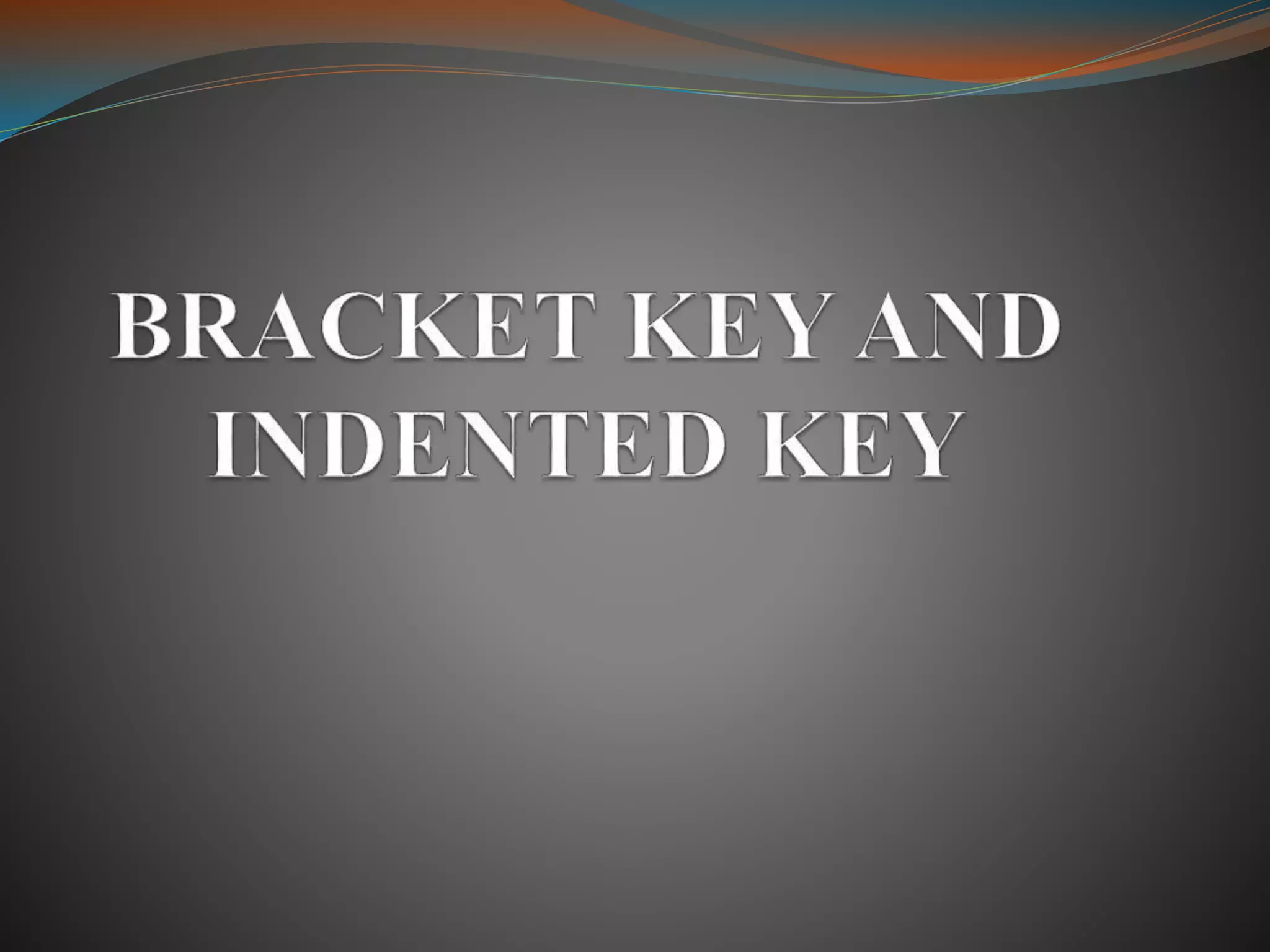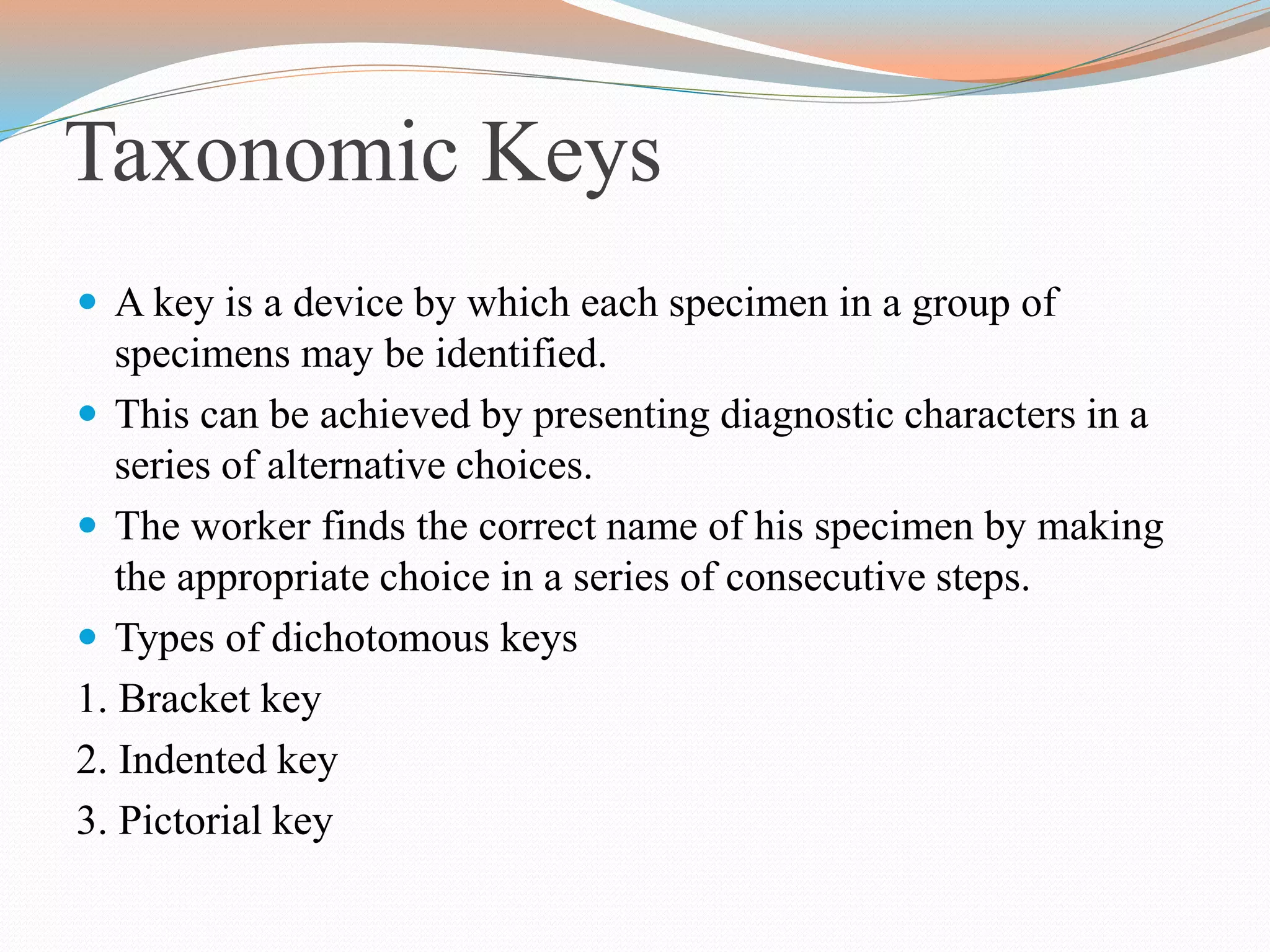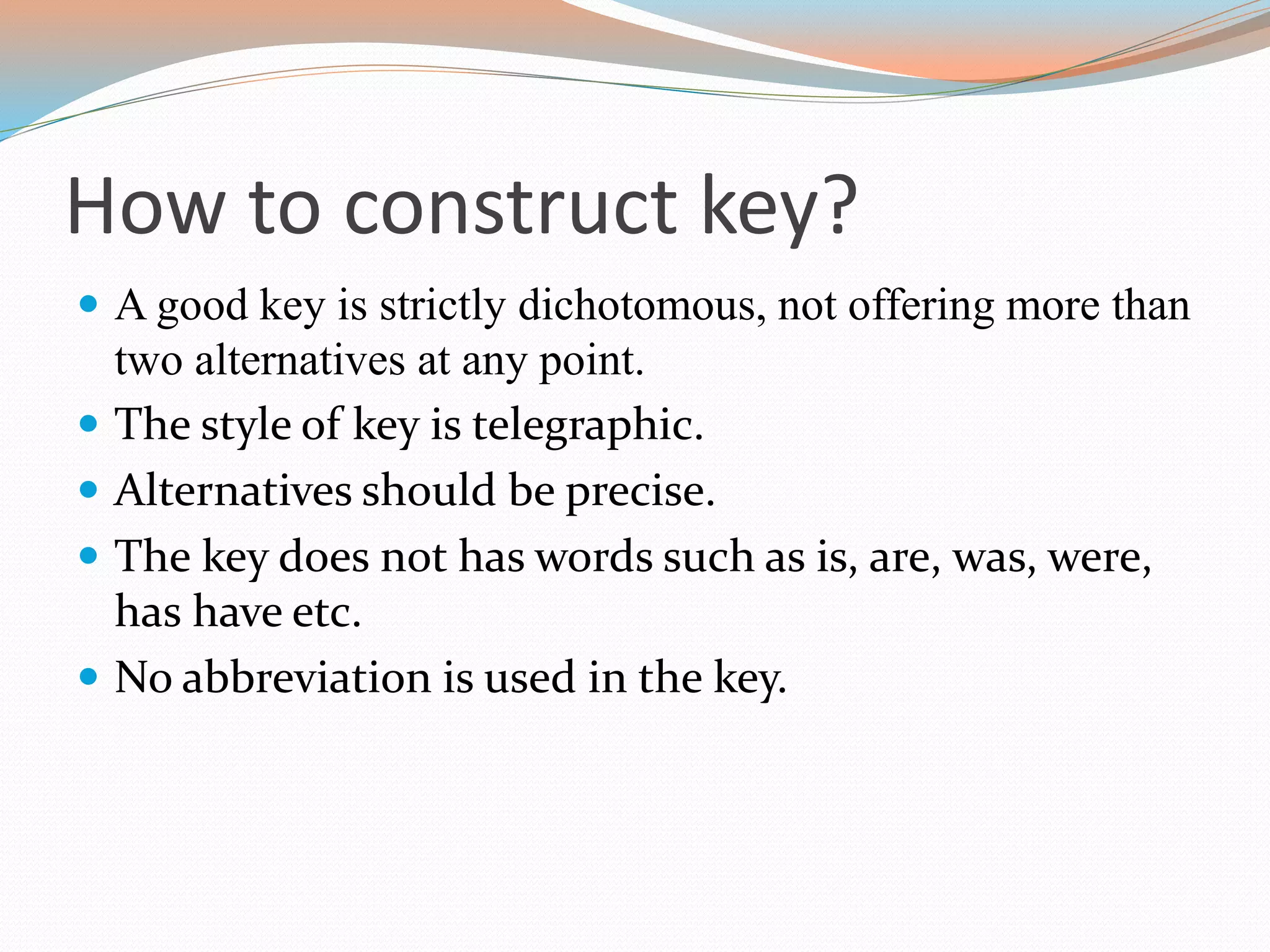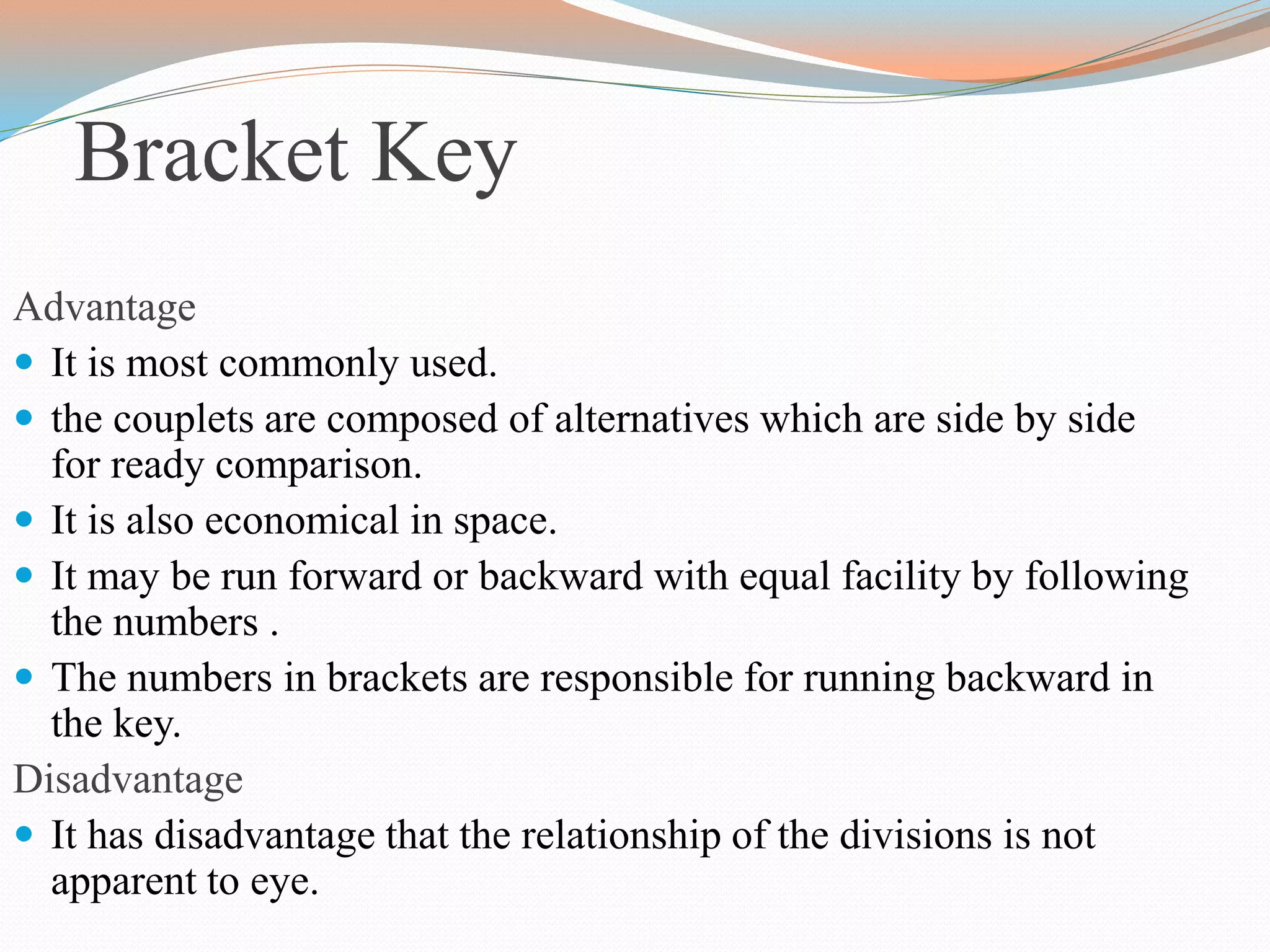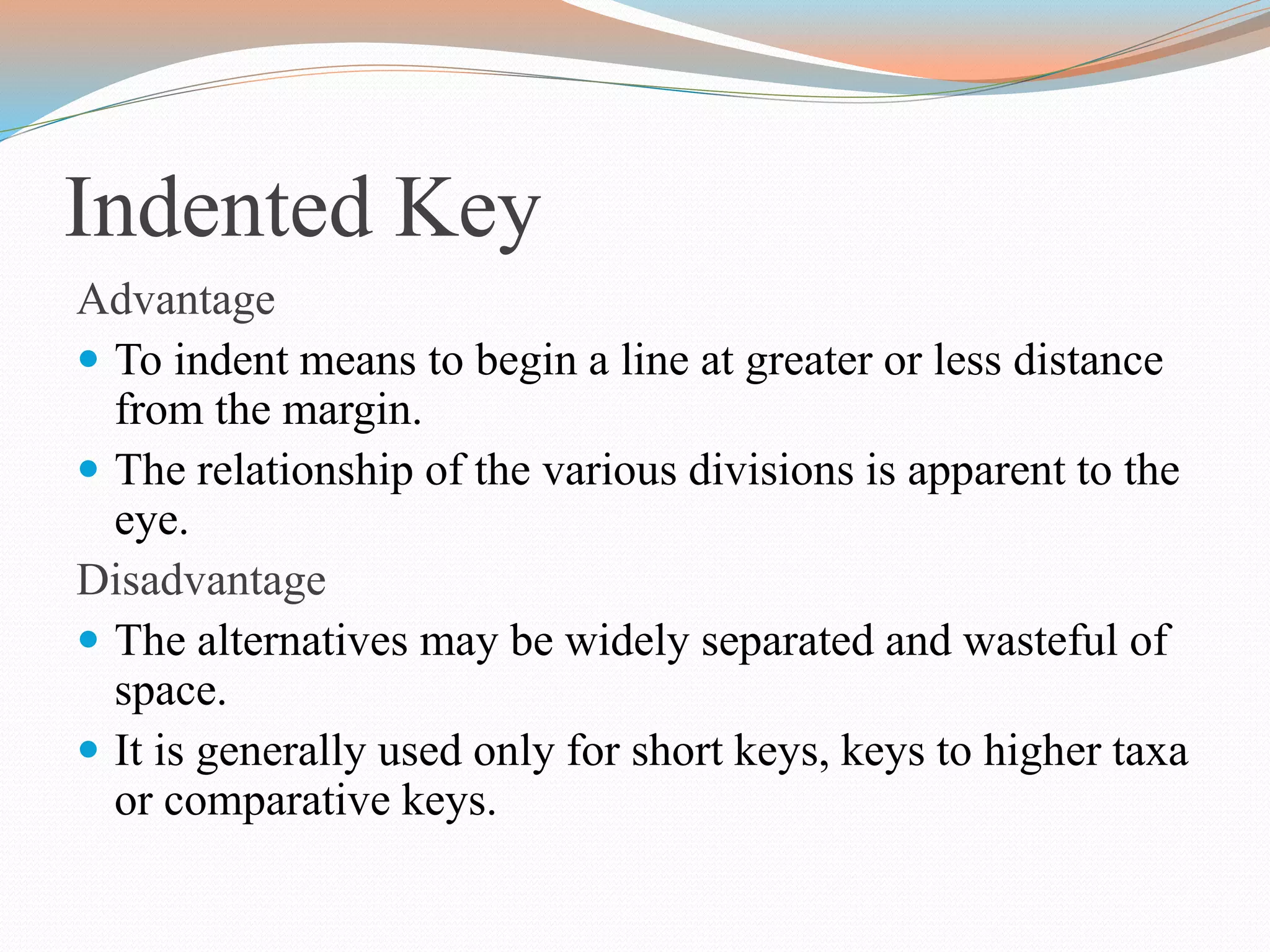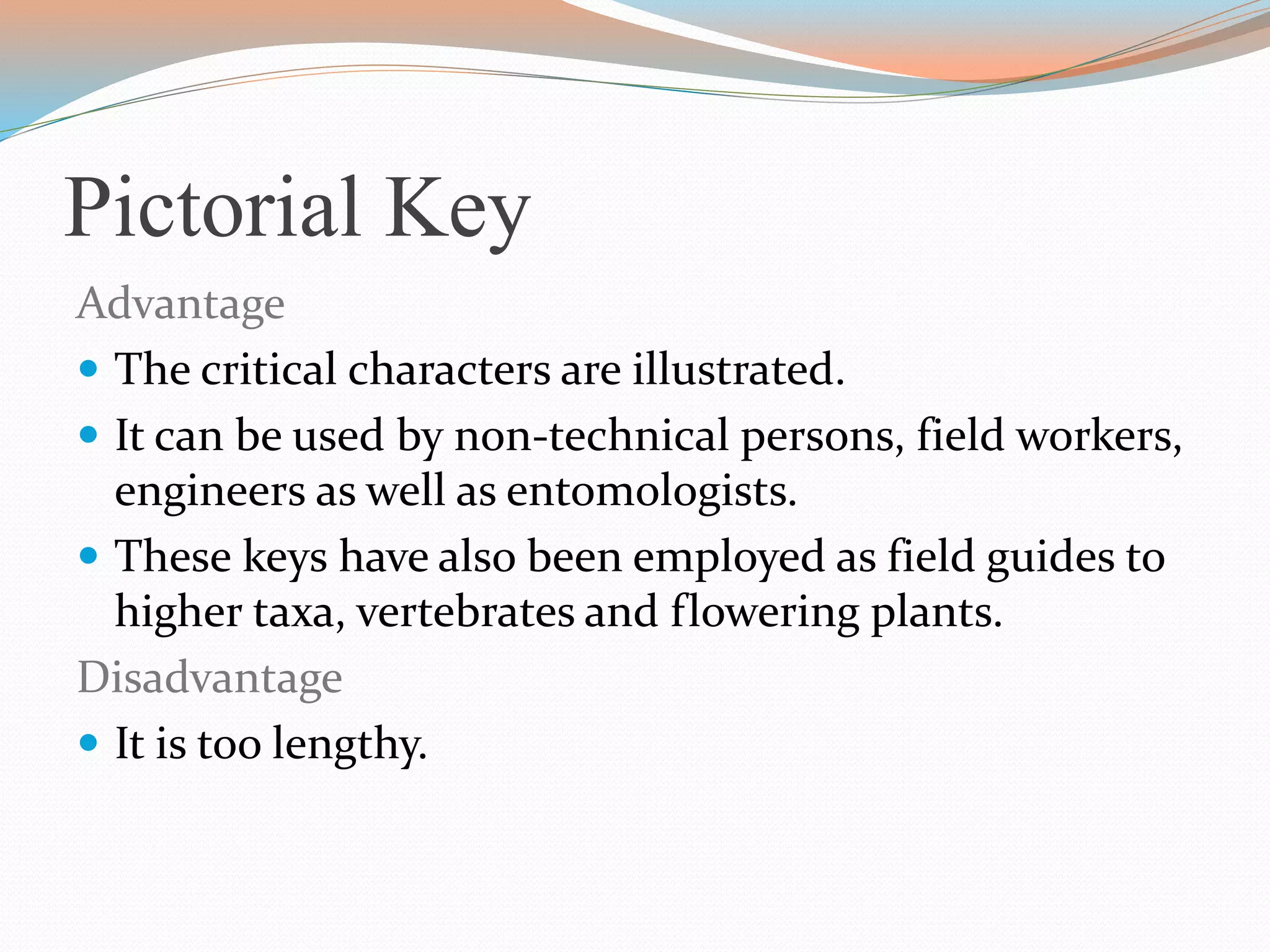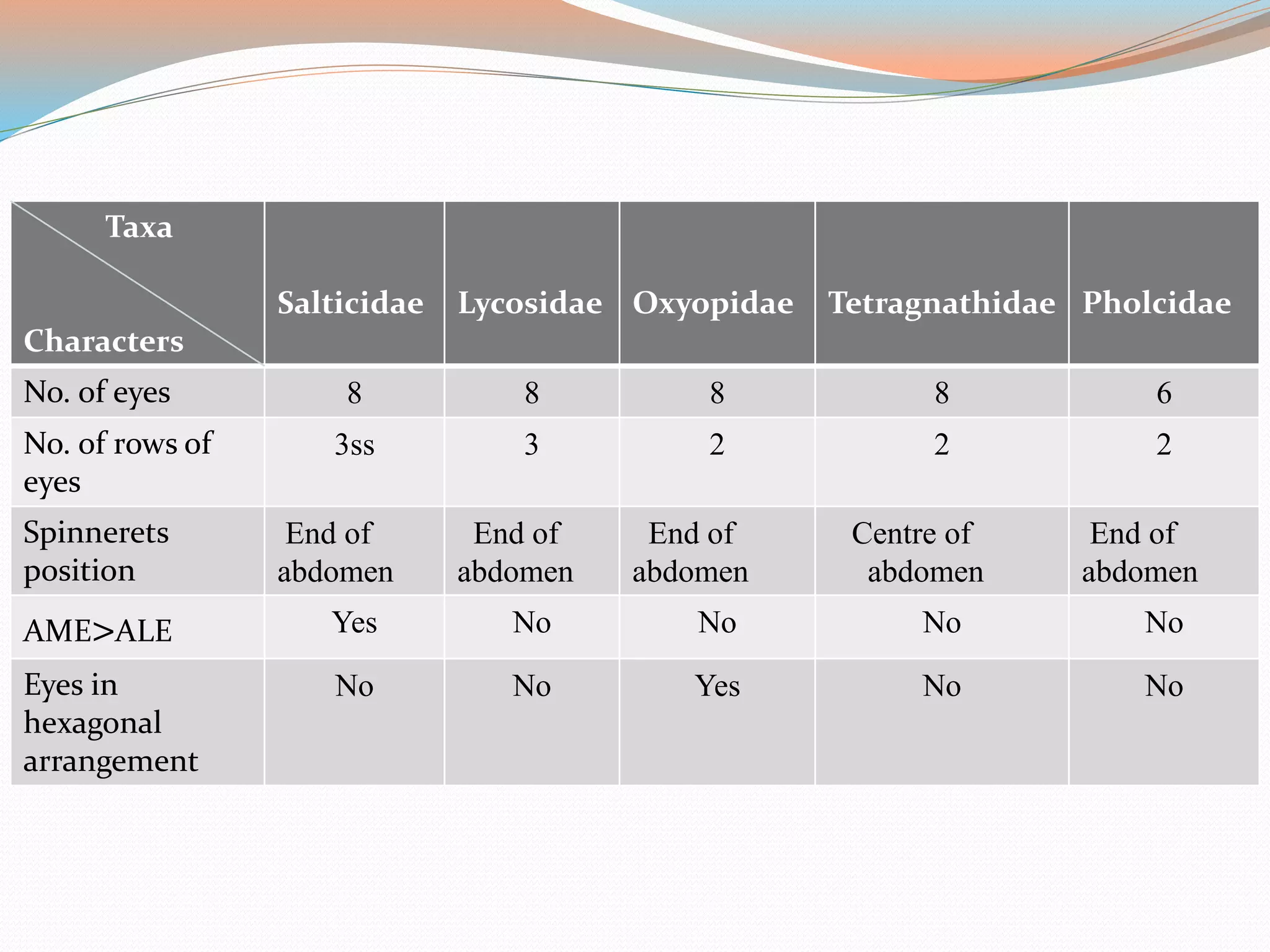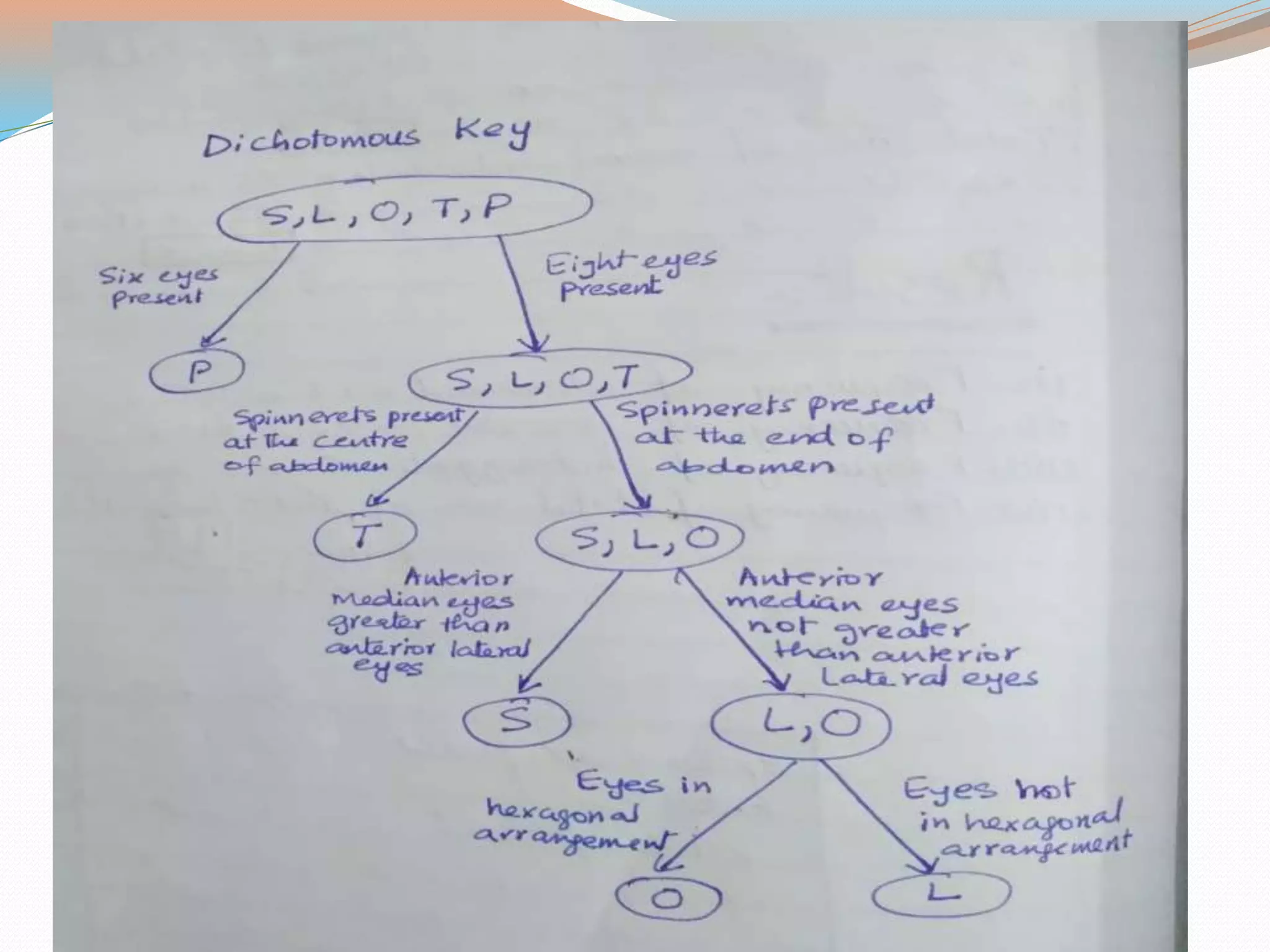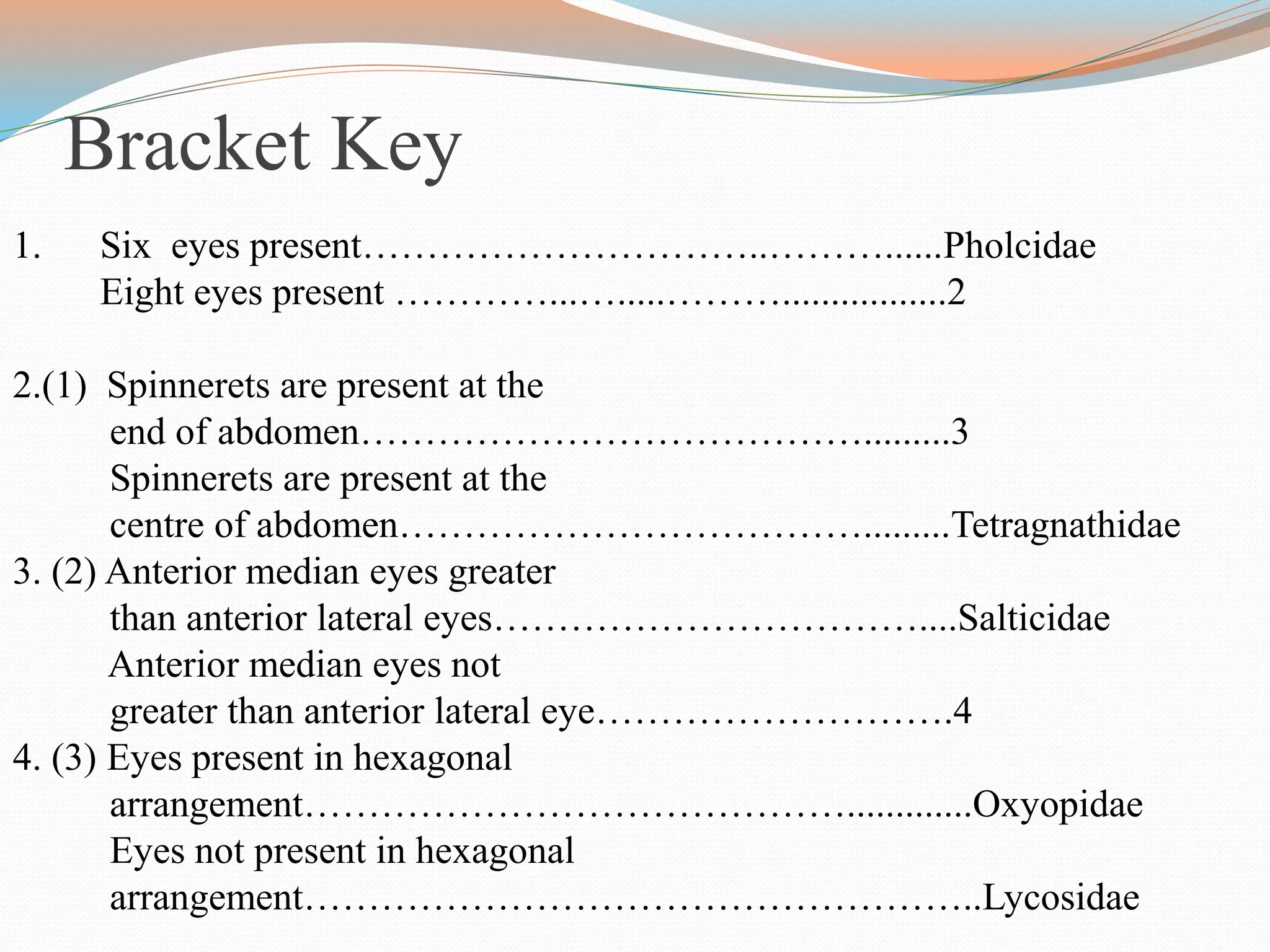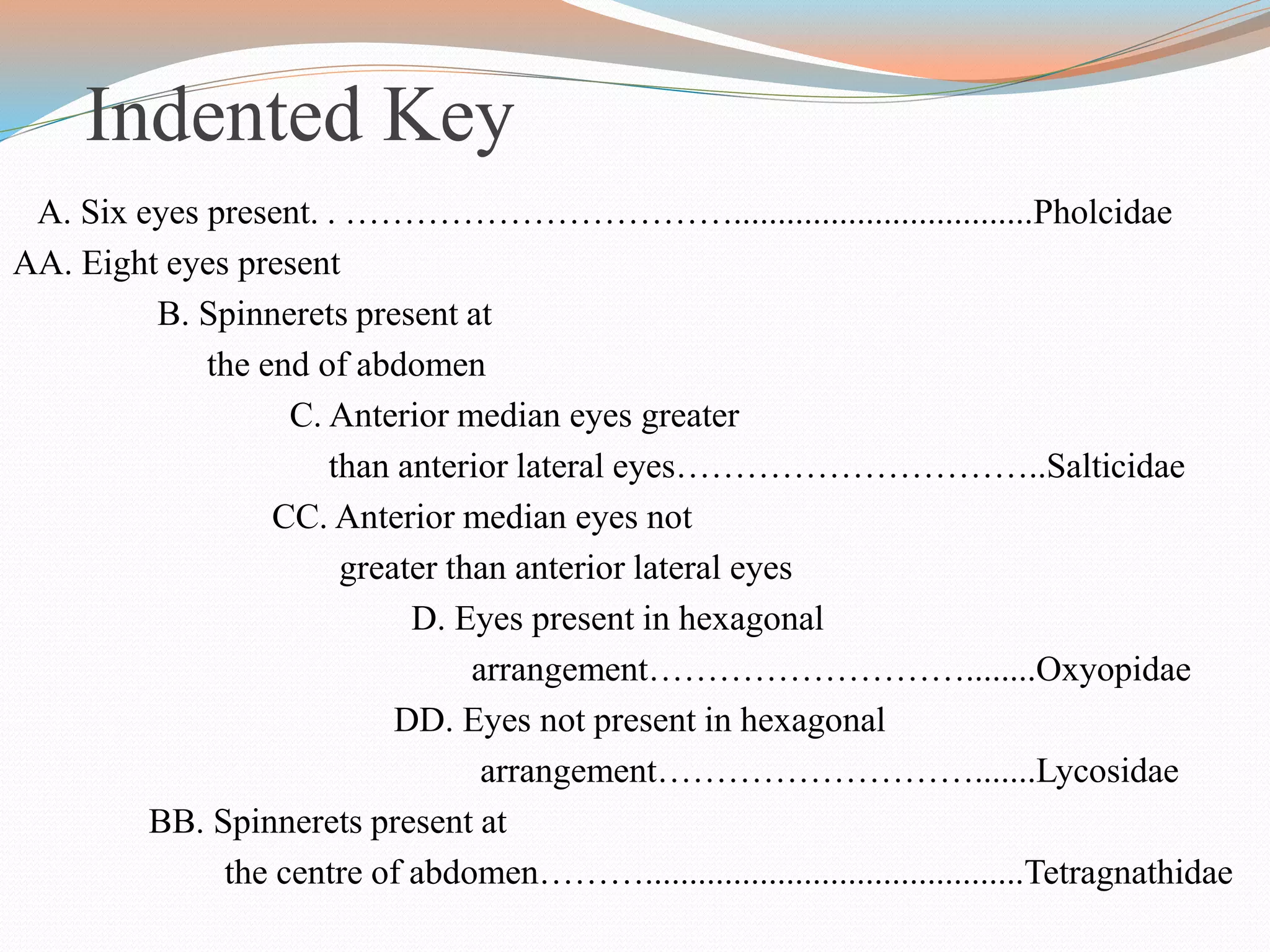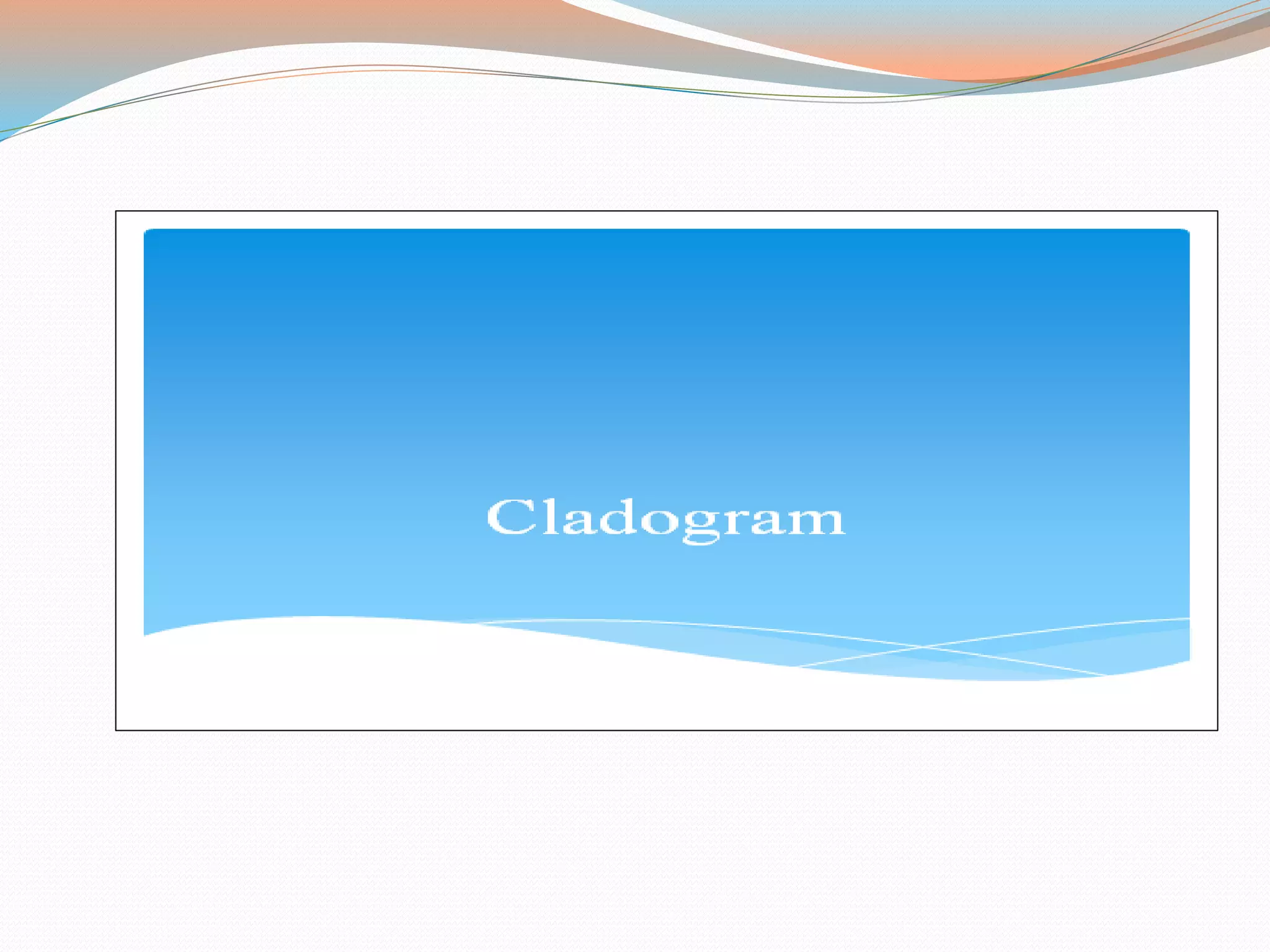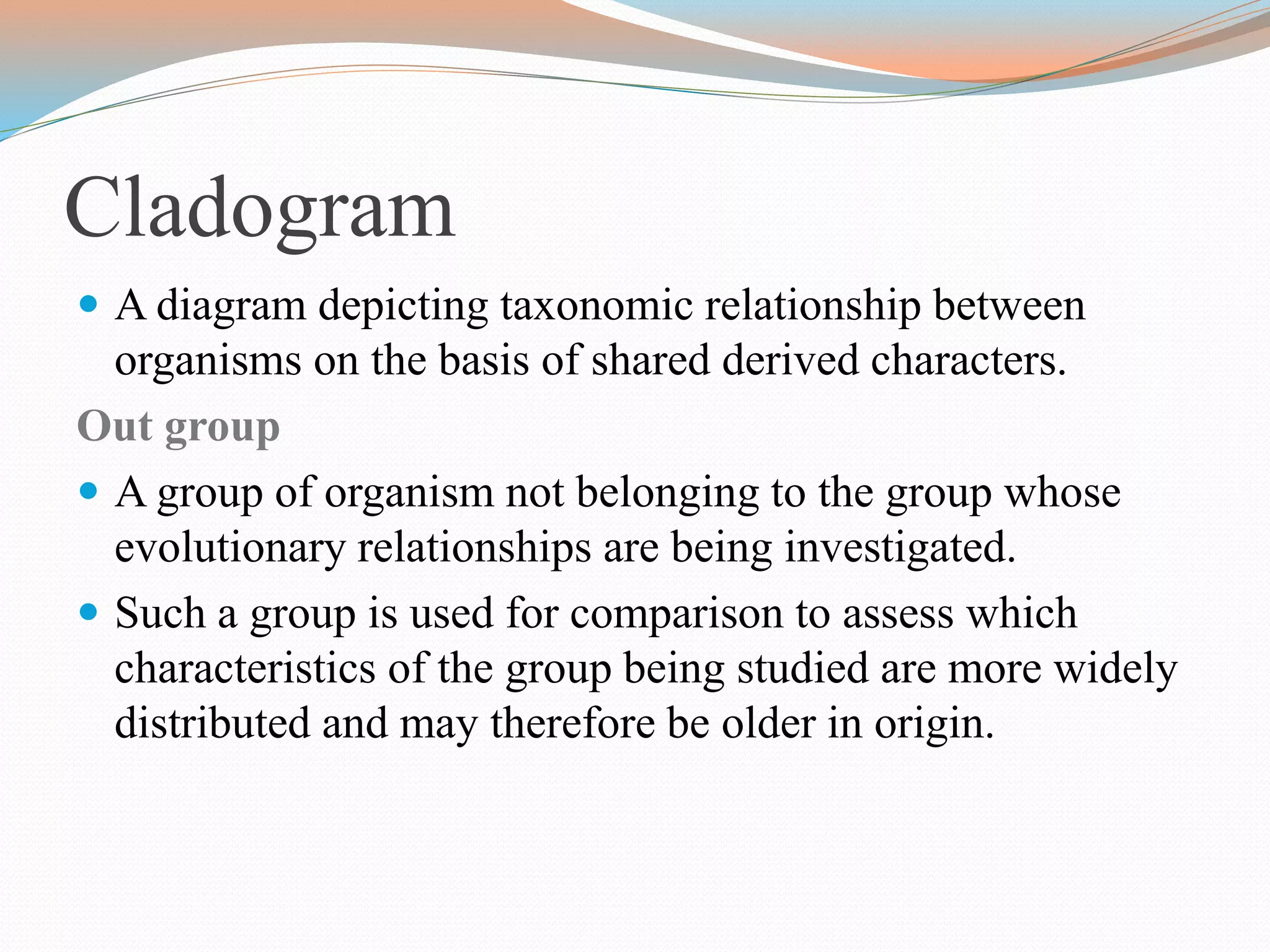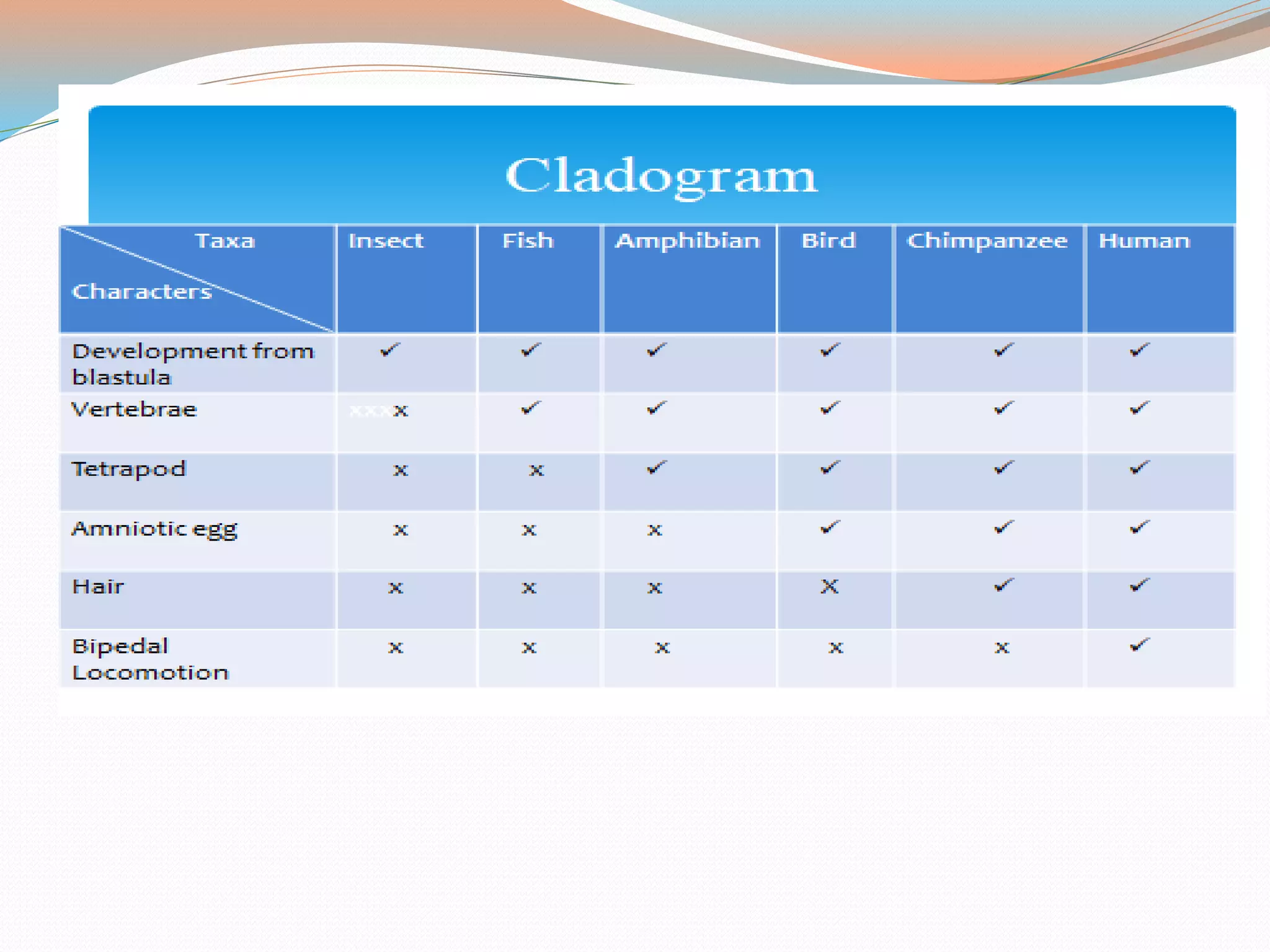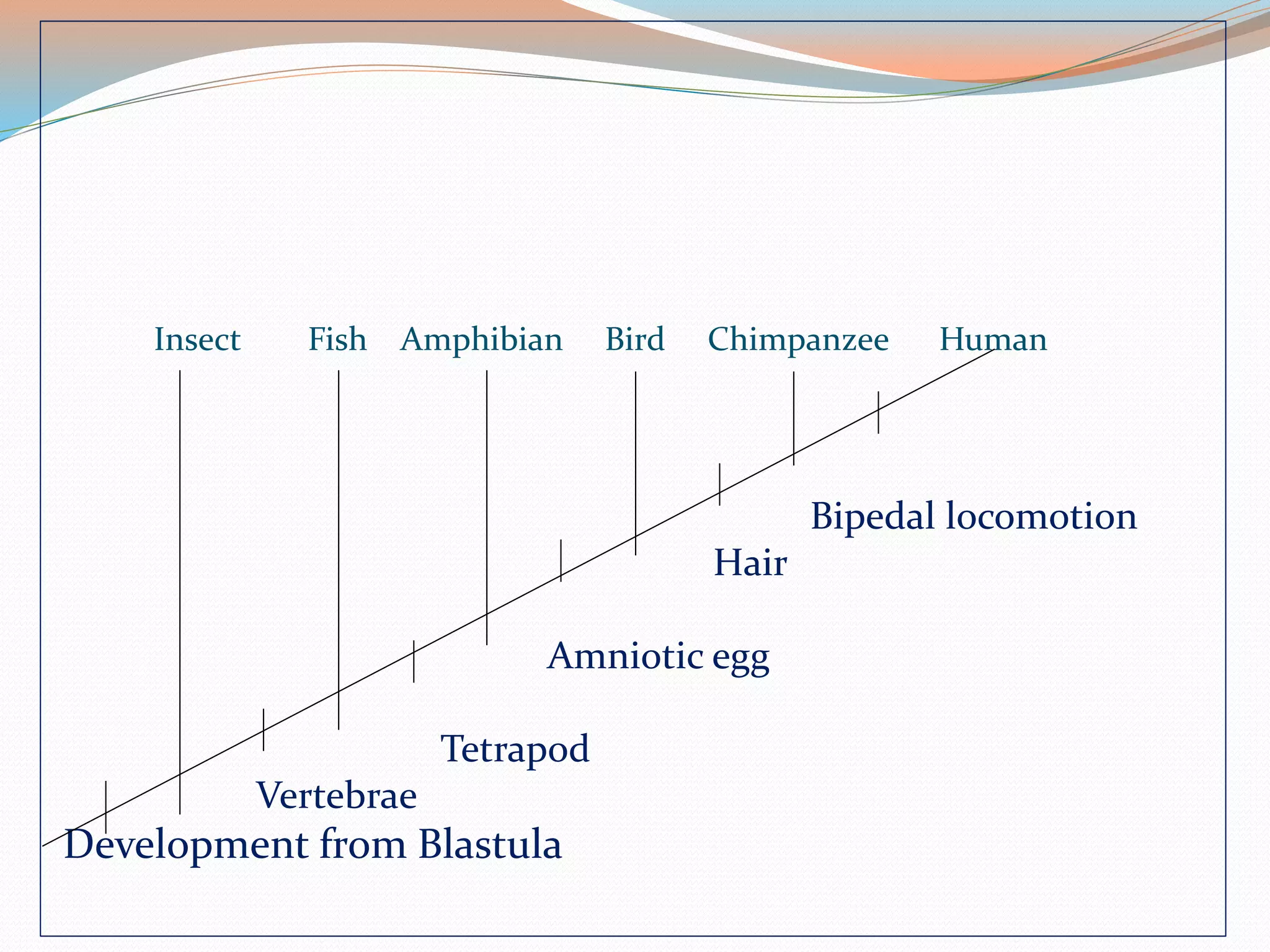The document discusses different types of taxonomic keys used to identify specimens, including bracket keys, indented keys, and pictorial keys. It provides examples of each type of key through comparisons of different spider families. Bracket keys are the most commonly used as they are economical in space but relationships between divisions are not apparent visually. Indented keys show relationships visually but can waste space. Pictorial keys use illustrations but are lengthy. The document also provides examples of bracket and indented keys identifying spider families based on characteristics like eye arrangement and placement of spinnerets. It concludes with brief definitions of cladograms and outgroups in taxonomy.


